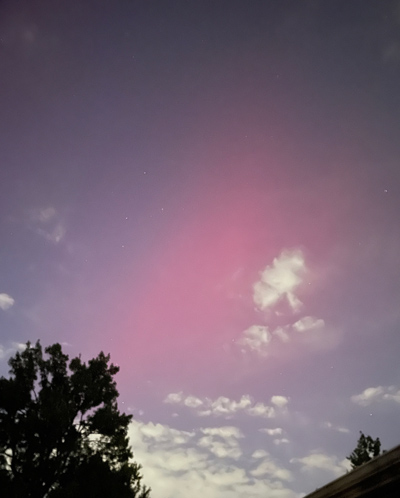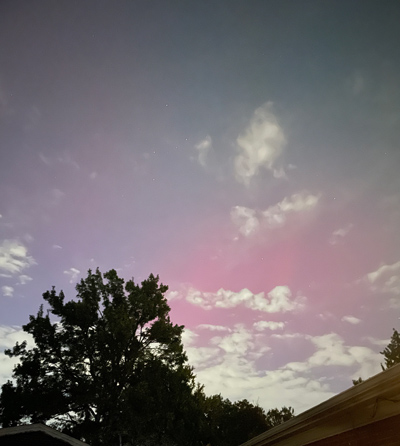

On a dark night in central Alaska, the sky might be lit with green and red lights four out of every five nights. These lights are the famous northern lights. Despite their name, the northern lights can be seen much further south than Alaska. They have been seen as far south as Mexico and even Colombia. In the southern hemisphere, similar lights in the sky are called southern lights. Both the northern and southern lights are collectively called auroras. The Sun has a magnetic field. Disturbances in the magnetic field can cause a stream of magnetic particles to speed away from the sun out into the solar system. When these particles reach Earth, they react with particles in our atmosphere and cause brilliant colorful lights in our sky. Different colors occur at different altitudes. When the solar particles react with the few oxygen particles in the highest parts of our atmosphere, they produce red or pink colors. Lower down when there are many more oxygen particles. Interacting with this many particles produces green colors. At a still lower altitude, the solar particles interact with nitrogen. These produce blue colors. Since the particles are magnetic, they mostly follow Earth’s magnetic field to the polar regions. This is why areas near the poles are the best for seeing auroras. Sometimes disturbances on the sun cause so much material to fly into space that they interact with the particles in our atmosphere over a much larger area of the Earth. This causes the northern and southern lights to be seen not only near the poles but also much farther away. The sun, like Earth, has a north and a south pole. Every 11 years, the sun reverses polarity. If you could use a compass on the sun, you would find that the compass was pointing in the opposite direction. As this reversal takes place, it causes many disturbances in the sun’s magnetic field. About mid-way through the 11 years, there are very few disturbances. So about every 11 years, chances greatly improve of seeing auroras further from the poles. This year the sun is at the peak of its 11-year cycle and we have had several widespread aurora sightings. Scientists can predict when the northern lights will be visible but only for a day or two in advance. If you follow northern lights sightings closely, you can tell when conditions are favorable for your area. Seeing the northern lights, even when they are visible in your area, is a little tricky. They can be visible for only a short amount of time. But if you go out and look often enough this year, you may see the northern lights even if you don’t live in the Arctic.
